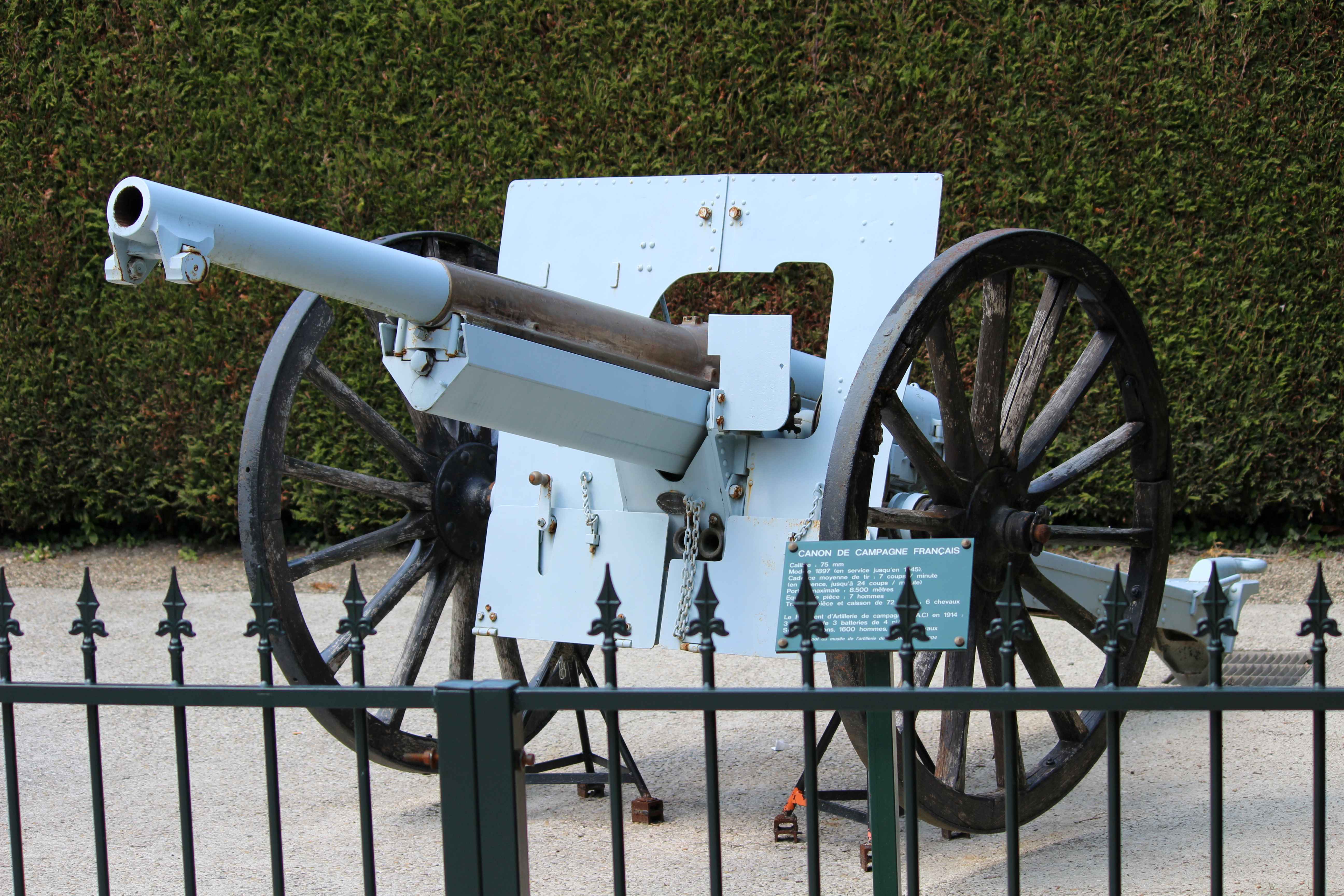Blog 12/22/2023 - A MHT Holiday Toast
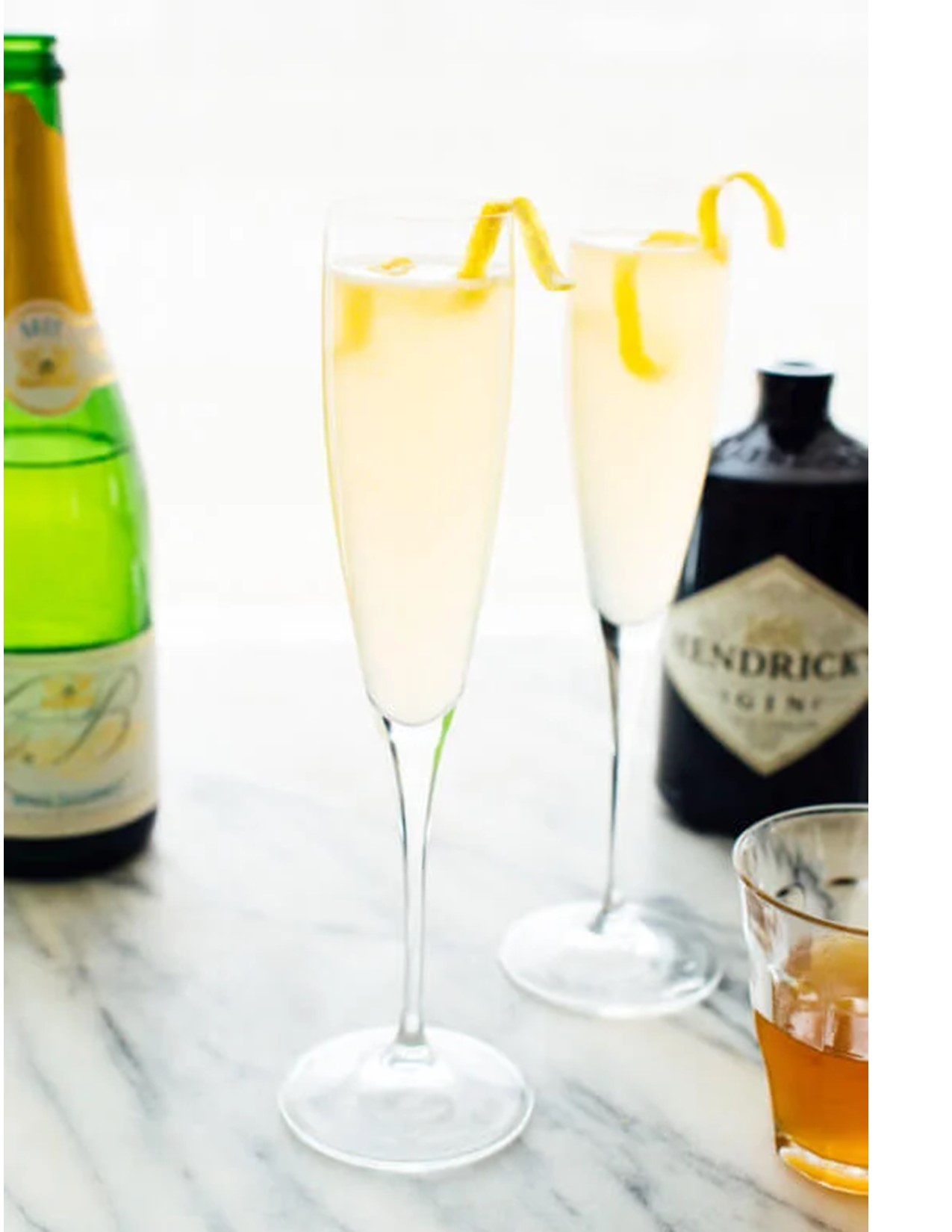
MHT’s Holiday recommendation is to celebrate the season & New Year toasting with a “French 75”. It is a cocktail made from gin, champagne, lemon juice, & simple syrup (sugar.) In France it is simply a “Soixante-Quinze” (French for Seventy-Five.) The drink dates back to World War I, and an early form was created in the 1920s at the New York Bar in Paris by famed Scottish barman & mixologist Harry McElhone who would later own the bar & rename it Harry's New York Bar that still operates today. The combination was said to have such a kick that it felt like being hit by a shell from the famous World War I (WWI) French 75mm artillery piece.
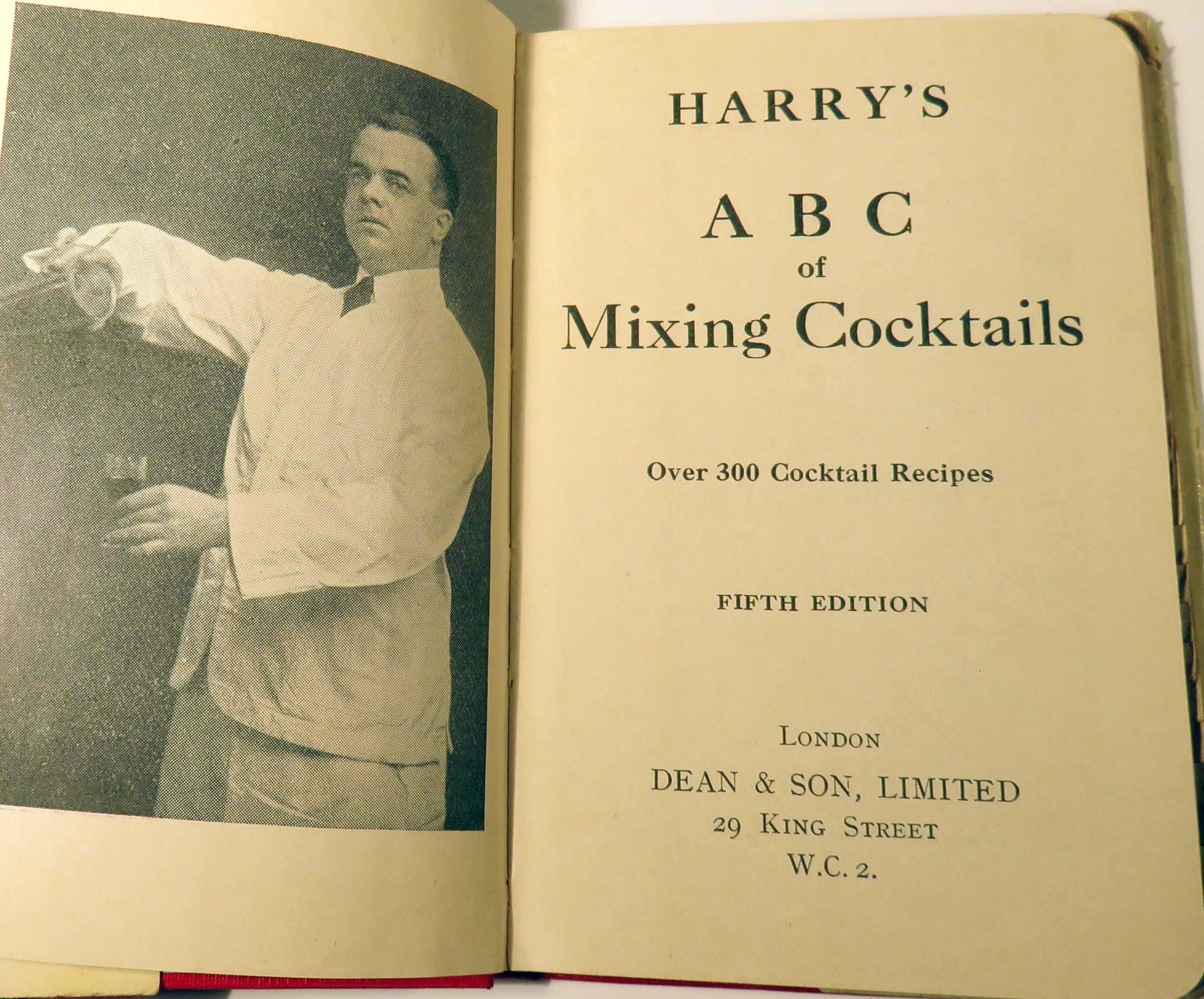
Harry went to Paris in 1911 to work as a bartender for Tod Sloan. Sloan, an American, was one of the world’s first star jockeys who was very successful in the U.S. & crossed the Atlantic to even greater stardom in England. He used his European winnings to buy a small Bistro at 5 Rue Daunou in 1911, near the Place de l’Opéra Opera House & renamed it the New York Bar. That is the place McElhone would later buy & make world famous.
The history of the “French 75’s” creation is shrouded in the fog of war but grew in prominence during WWI. In 1915, an article by a U.S. war correspondent mentions the “Soixante-Quinze” was a favorite at the front as 1/3 gin, 1/3 Calvados (the famed Normandy Apple Brandy), 1/3 Grenadine (a nonalcoholic bar syrup characterized by its deep red color made from pomegranate) & a dash of lemon juice.
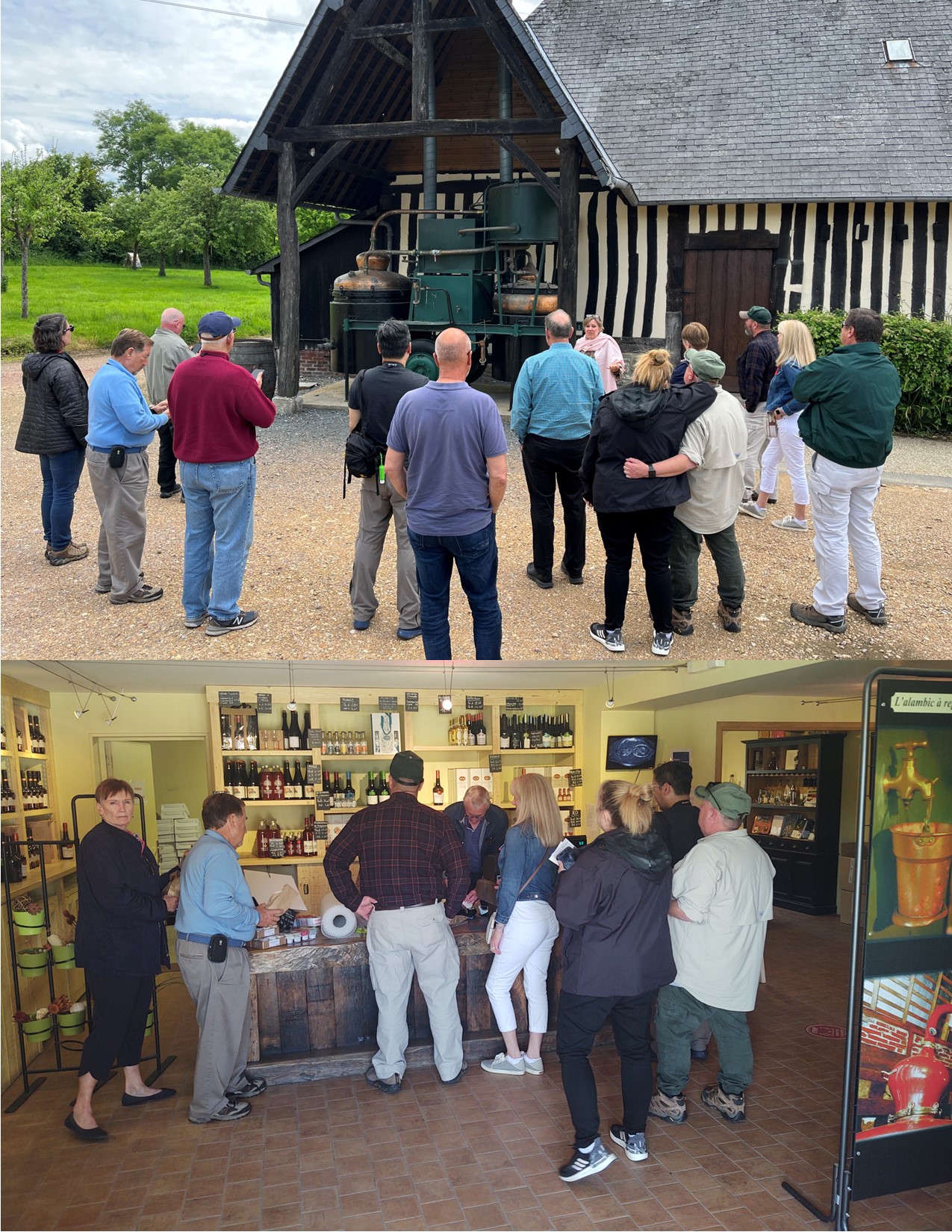
MHT groups visit the Calvados Distillery & samples some of the product during our D-Day Normandy Tours.
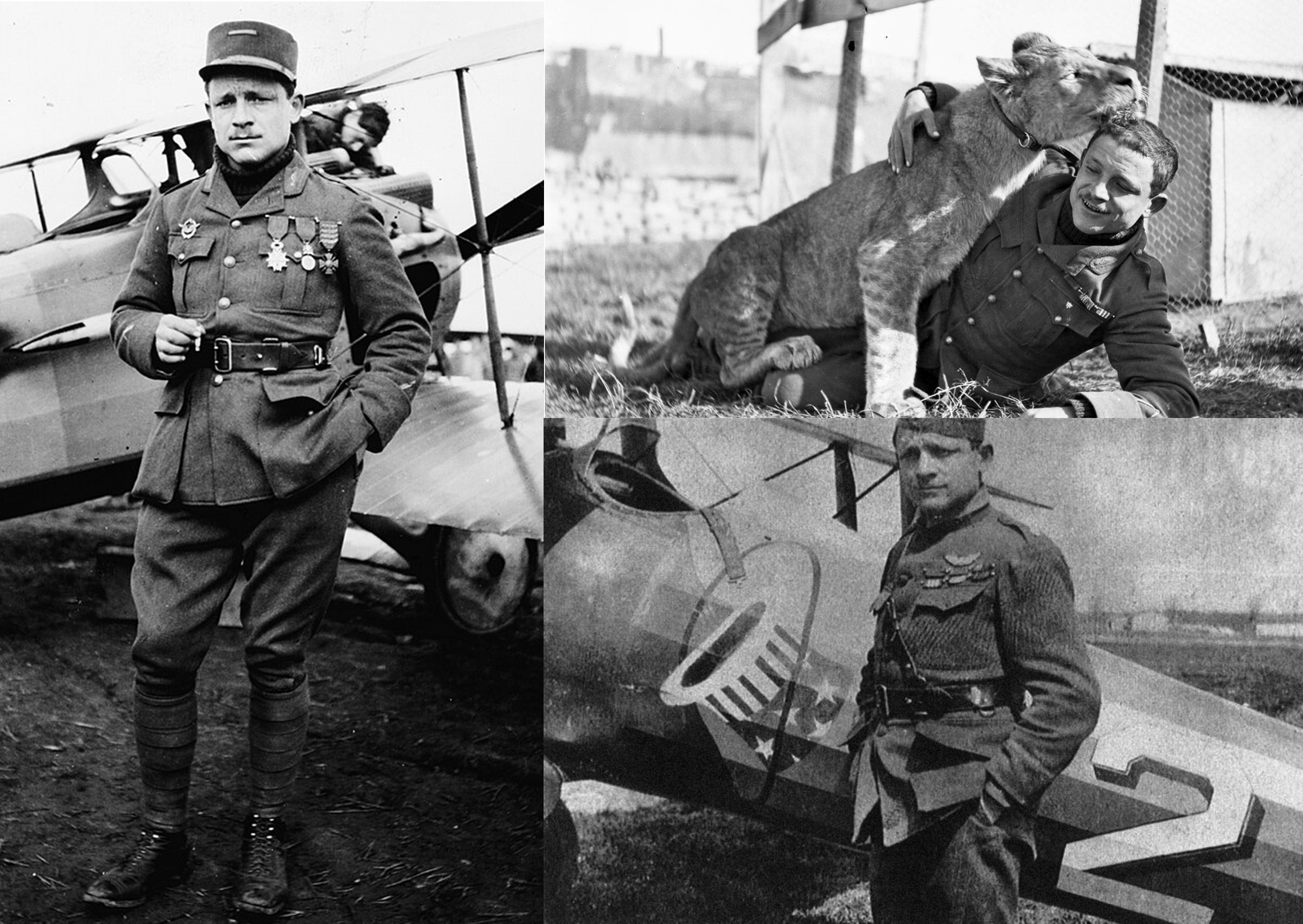
The most colorful story on the founding of the “French 75” was that WWI Flying Ace Raoul Lufbery, a French-born American citizen, who flew with the Escadrille Américaine quickly renamed the Escadrille Lafayette (after a German complaint of a U.S. neutrality violation) had invented the cocktail. Lufbery became the squadron's first, and ultimately their highest scoring flying ace, with 16 confirmed victories. He was famous for the “Lufbery circle” fighter maneuver but recognized uniquely for being the most loved aviator by the squadron’s celebrated mascot “Whiskey,” a male lion cub & later “Soda,” a female lion cub that provided the squadron’s pilots countless moments of relief from battle stress.
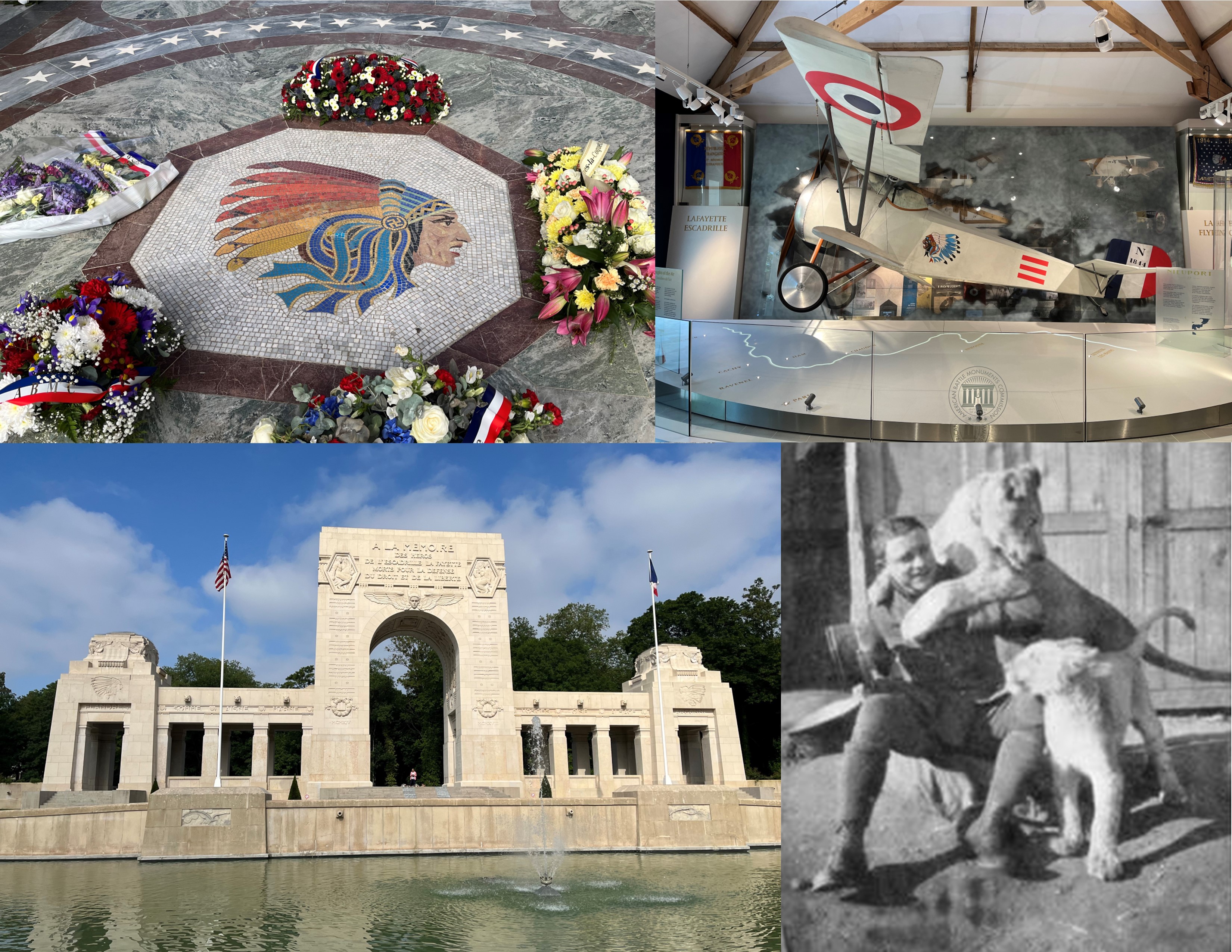
MHT Tours of Paris stop at the beautiful American Battle Monuments Commission’s Lafayette Escadrille Memorial Cemetery.
When U.S. entered the war, Lufbery was made a Major & Commanding Officer of the U.S. Army Air Service first squadron the 94th Aero Squadron, the famed “Hat in the Ring” aircraft unit leading U.S. Ace of Aces (26 Kills) & Medal of Honor recipient Eddie Rickenbacker. Jean “Shep” Shepherd, American radio & TV humorist on his 17 November 1969 radio broadcast said Lufbery & the pilots toasted their victories & losses of their dangerous profession against the Albatrosses & Fokkers of the German Flying Circuses over the Western Front upon returning to their field. Lufbery invented the “French 75” at the Squadron Mess consisting of 1 gigger of Cognac in a highball glass filled with ice & champagne. The kick added by the Cognac to the champagne was equated to the impact of an artillery round on target.
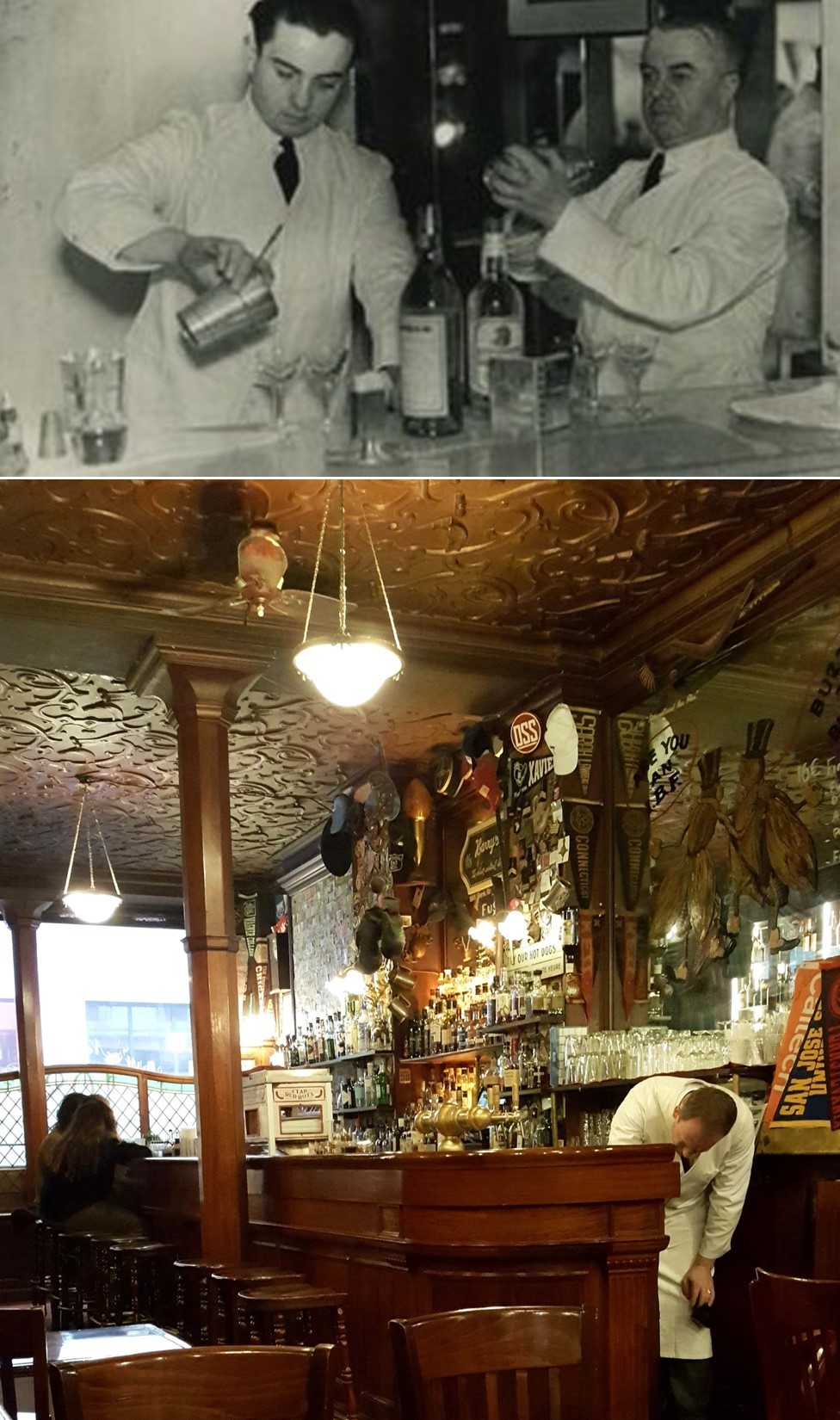
In 1921, Harry recorded a recipe in his “Harry of Ciro’s (a classy bar chain from Monte Carlo with sites in Paris, London & Biarritz) ABC of Mixing Cocktails” on page 65. He also used the same recipe in 1927 on page 64 in his classic book “Barflies and Cocktails: 300 Recipes”:
1 teaspoon of Grenadine
2 dashes of Absinthe (difficult, as this liquor nicknamed the Green Fairy, was banned in France in 1914)
2/3 of Calvados (Normandy Brandy)
1/3 Gin
Shake well & strain into a cocktail “Collins” glass.
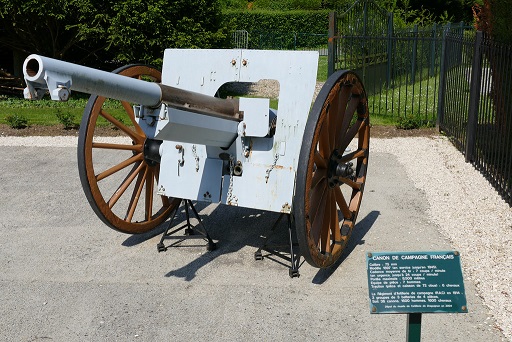
The actual French 75-millimeter field gun was a quick-firing field artillery piece adopted by the French in March 1898. Matériel de 75 mm Mle 1897 was its official designation & it was designed as an anti-personnel weapon system for delivering a large volumes of time-fused shrapnel shells on enemy troops advancing in the open. In Redleg history, the French 75 is regarded as the first modern artillery piece as it used a hydro-pneumatic recoil mechanism, meaning the piece didn’t have to be re-aimed after every shot. With the piece not shifting on its wheel & trails it could be reloaded as soon as the barrel returned to the resting position. This allowed for a firing rate of 15 rounds a minute for either shrapnel or high-explosive rounds making it the most advanced artillery weapon when it was introduced. In 1914 at the opening of WWI, the French Army had about 4,000 in service. By the end of the war about 12,000 had been produced although the Imperial German Army had their cannon maker, Krupp, develop a 77mm fast shooting field gun as well as their superior heavy artillery.

The American Expeditionary Forces (AEF), was supplied with about 2,000 French 75 field guns as the U.S. was behind in developing modern artillery & emphasis was getting U.S. manpower into the war rather than shipping heavy gear to France. Once transferred to the U.S. Army it was officially named the M1897 gun. During his service with the American Expeditionary Forces, U.S. Army Captain (& future U.S. President) Harry S. Truman commanded a battery of French 75s.
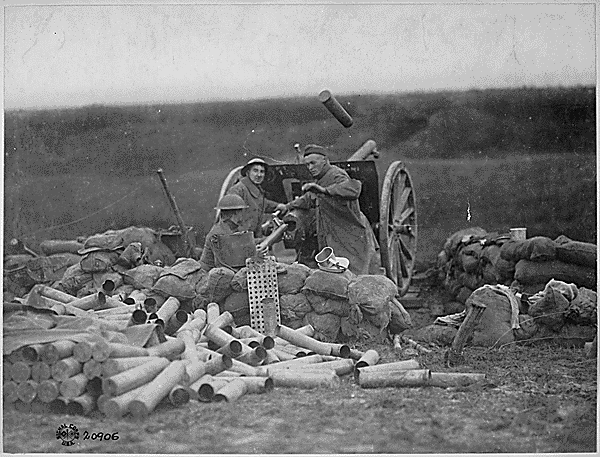
AEF Crew with "Bridget", a French 75 of Battery C, 1st Battalion 6th Field Artillery Regiment (C/1/6), which fired the U.S. Army’s first shot in WWI at 6.05AM, on 23 October 1917, on the Lorraine front. A shell case flying through the air with a new shell sliding into the breech in the same fraction of a second.
Now the controversy on who has “Bridget?”
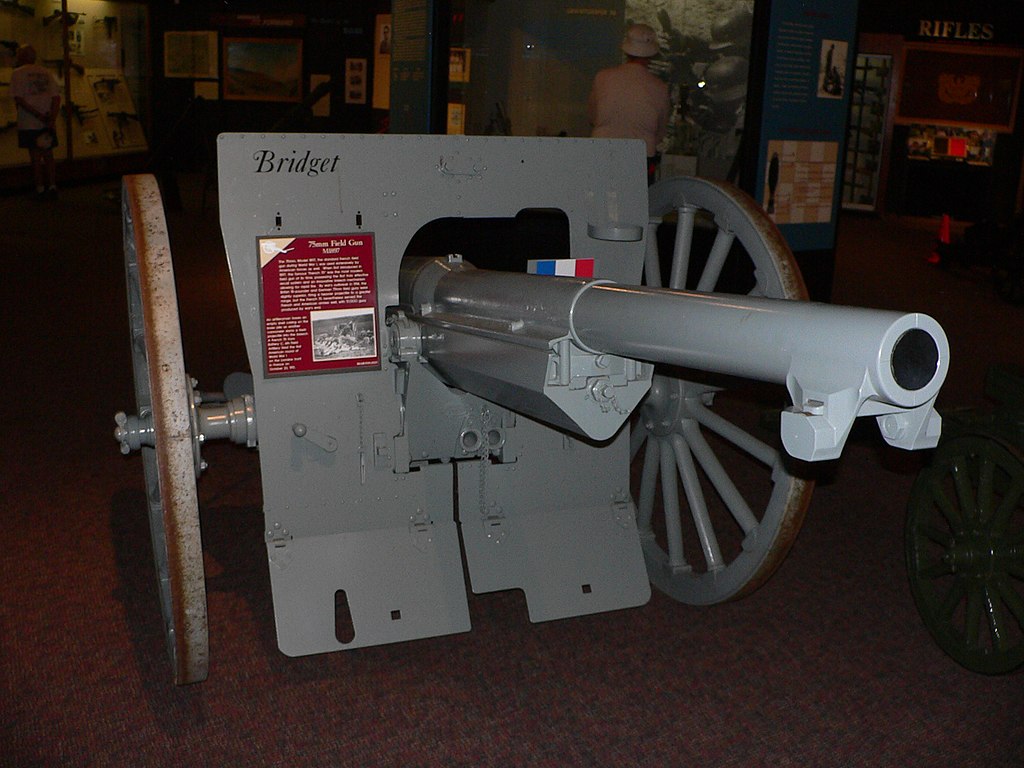
As a picture notes “The gun is a French Canon de 75 modèle 1897 named Bridget, [first U.S. artillery shots in action in WWI fired by C/1/6] held today at the United States Army Ordnance Museum (Aberdeen Proving Ground, MD), USA.”
“The first shots at the new Proving Ground were fired on the 2nd of January, 1918. Contemporary reports state that the first shot was fired by Mrs. Edward V. Stocknam, of Aberdeen, with whose husband Colonel Ruggles had been associated at West Point. The report continues to say that the first tests made that day were of shrapnel shells from the contract lot of the Bartlett-Hayward Company. The ordnance used consisted of several field pieces; the first, used for the initial shot, was a 1905 Army model, made in 1914 by Bethlehem Steel Company. Also used was a 1902 model made at the Watervliet Arsenal in 1915. Perhaps the most interesting piece fired that day was a French '75', a 75mm gun that had been used at the battle of Verdun. This piece is significant, for throughout the years many pieces of foreign ordnance, both allied and enemy, would be tested at Aberdeen.”
Grandine K., Henry, Jr. W. R. & Henry, I. J (1982). Historic Building Inventory - Aberdeen Proving Ground, Maryland p. 22 Historic American Building Survey/Historic American Engineering Record, National Park Service, Department of the Interior, Washington, D.C.
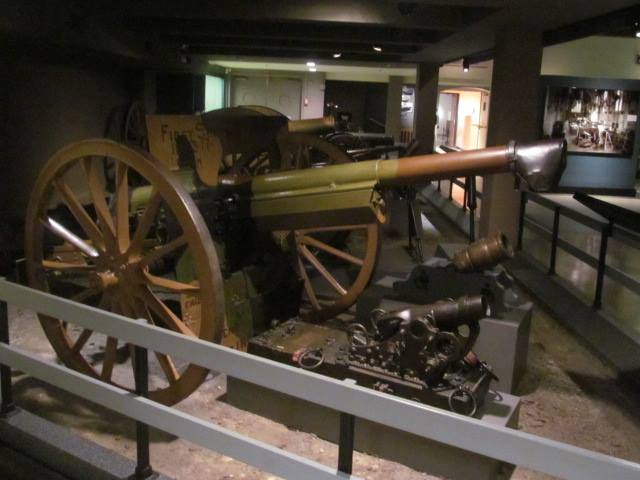
From the USMA West Point Museum Website: “The 75mm artillery piece that cranked out the first U.S. shot on the Western Front in World War I, a century ago last week is still in the Army’s custody. The M1897 gun, a French-made field gun named “Bridget” is on display today in the Large Weapons Gallery at the U.S. Army Military Academy Museum at West Point but on 23 Oct 1917, it fired the first shot across “No Man’s Land” by American forces in France.” The gun was sent back to the states in 1918 and is at West Point today, still with the names of the “First Shot” crew who fired it 100 years ago last week.”
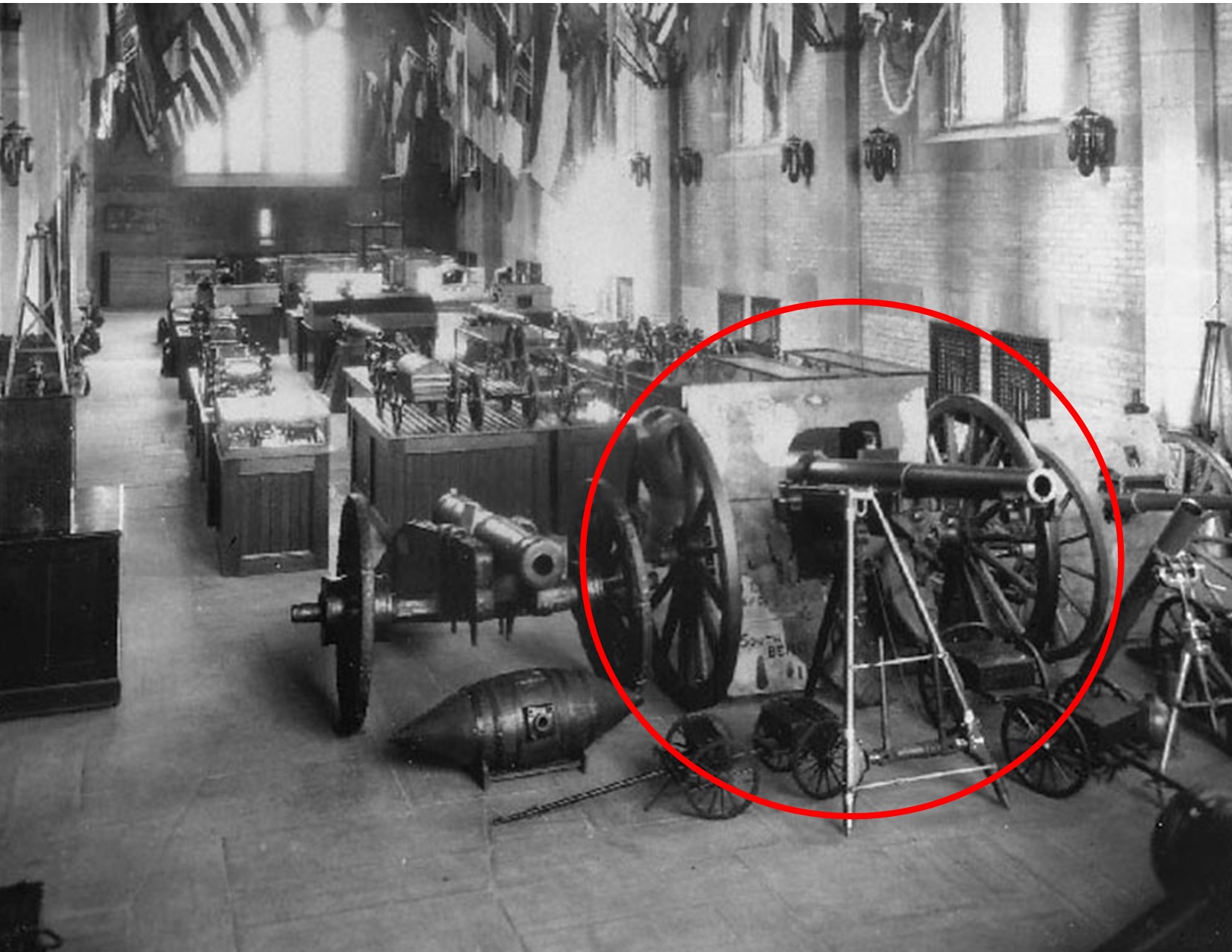
Large Weapons - On the lowest level of the West Point Museum are several over-sized displays ranging from artillery pieces to a First World War tank. Highlighted are two murals by a D-Day veteran depicting the Allied Invasion of Europe in 1944, an atomic bomb of the type dropped on Nagasaki and the cannon which fired the first American shot of World War I.
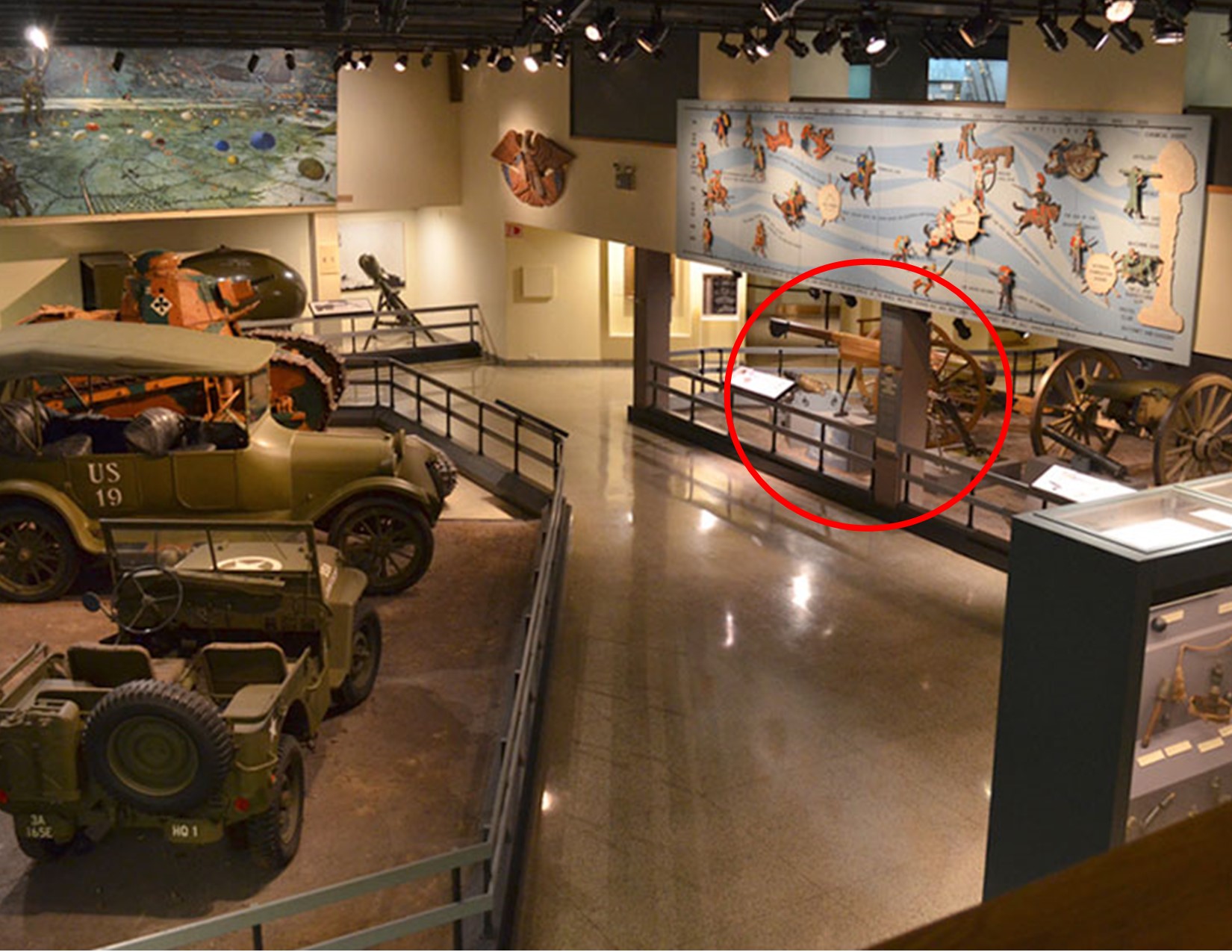
I’m going with USMA & I believe the real “Bridget” is at West Point as you can see the crew’s names written on the ballistic shield while Aberdeen Proving Ground has just a French 75 from Verdun. Note: The West Point Museum has a pair of 75mm guns out front of the building, versions/origins unknown.
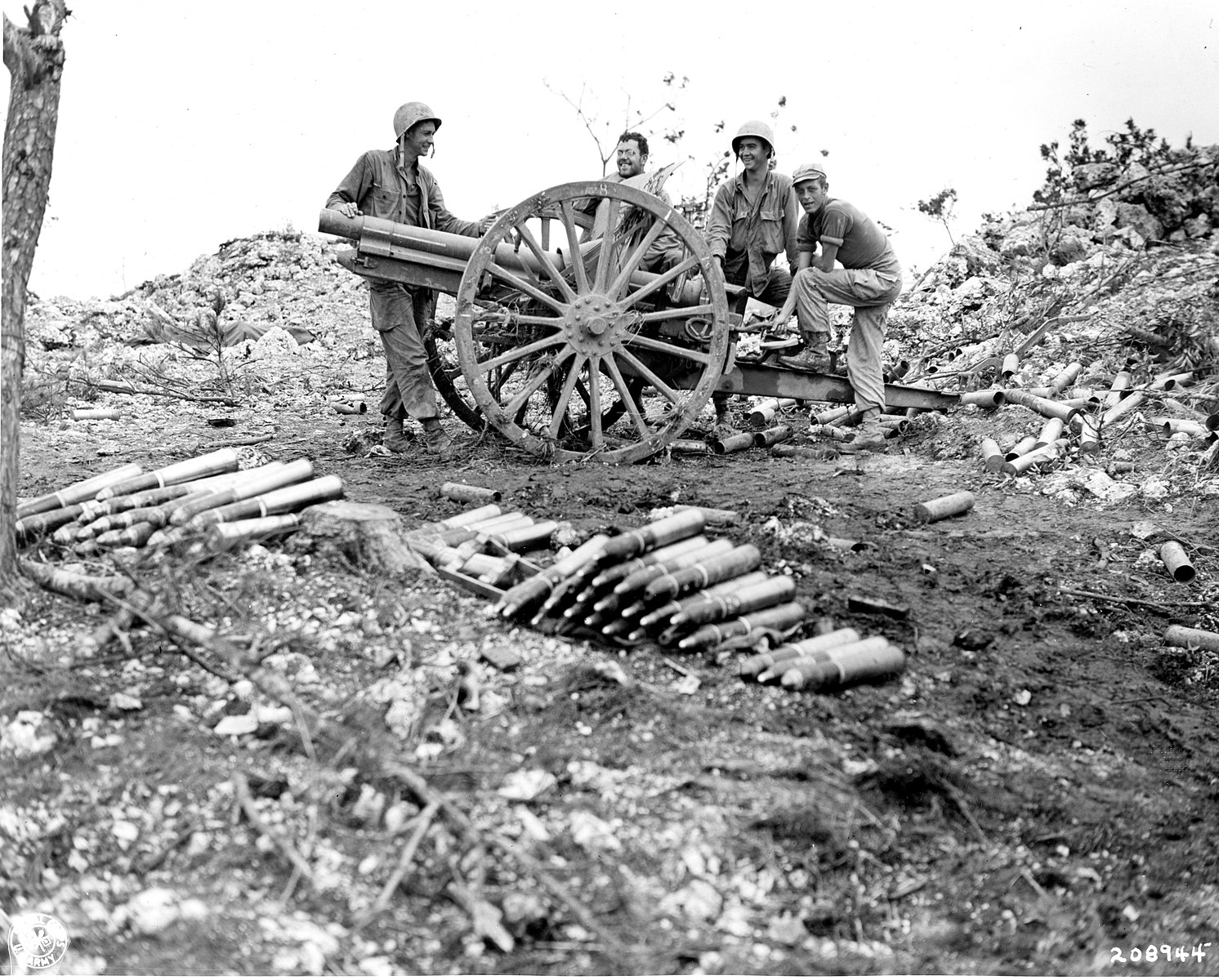
Company B, 1st Bn 184th Inf Regt inspect a Japanese Type 38 75-mm gun on Okinawa.
After 1915 with the onset of trench warfare, larger caliber impact-detonated high-explosive shells were necessary. By 1918, the 75s became the main agents of delivery for toxic chlorine, phosgene & mustard gas shells. The 75s also became widely used as truck mounted anti-aircraft artillery as aircraft became more prevalent over the Western Front. The 75 gun was also were the main armament of France’s Saint-Chamond tank in 1918.
4,500 were still in use in the French Army at the opening of WWII, updated with new wheels and tires to allow towing by trucks & armored vehicles rather than by horses & caissons. The Polish Army had almost 1,400 of them making them the predominant weapon in their artillery inventory. After both countries defeat about 3,500 were converted with a muzzle brake by the Germans into an anti-tank weapon & coastal artillery along the Atlantic Wall. The French 75 had set the standard for almost all early-20th century field pieces, with guns of mostly 75 mm forming the basis of many field artillery units into the early stages of WWII. In 1905, the Imperial Japanese Army General Staff turned to Krupp in Germany, for the latest trend in artillery design. Initial units of Krupp 7.5 cm Model 1903 were imported, and then eventually over 2,000 units, designated "Type 38" in Japan, were produced under license by the army’s Osaka Arsenal.
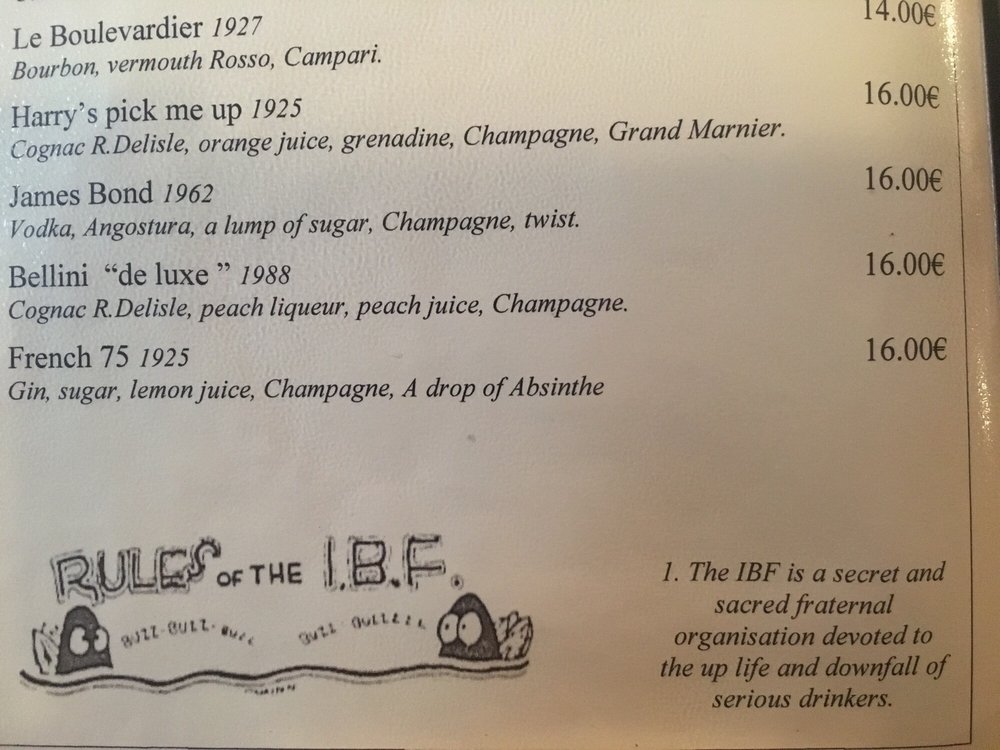
In 1925 (as seen in the current drink menu), at the New York Bar (renamed Harry’s New York Bar in 1933) in Paris served the drink’s original combination of gin, Champagne, lemon juice, simple syrup (sugar) & a drop of Absinthe was said to deliver such a kick that it felt like you were being shelled by the WWI French 75-millimeter field guns.
The drink was first recorded as the "75" in Harry's ABC of Mixing Cocktails, 1922 edition, by Harry McElhone, & also credited for creation by Henry Tépé of Henry’s Bar just two-minutes’ walk from The New York Bar in the same year in Robert Vermeire's Cocktails: How to Mix It. However, the recipes differed from McElhone's version consisting of Calvados, gin, grenadine, and absinthe, while Vermeire added lemon juice instead of absinthe.
The recipe took its now-classic form and "French 75" name in Here’s How, by Judge Jr. (1927), consisting of gin, sugar, lemon juice, and champagne. This recipe was republished with the name "French 75" in The Savoy Cocktail Book (1930), which helped popularize the drink.
STEP 1: Shake gin, sugar, and lemon juice well with cracked ice in a chilled cocktail shaker.
STEP 2: Strain into a Collins glass half-full of cracked ice.
STEP 3: Top off with Brut champagne.
Some later cocktail books harken back to the WWI Lufbery mixture by using cognac instead of gin, such as The Fine Art of Mixing Drinks by David A. Embury.
1.5-ounce cognac (Courvoisier VS)
1 teaspoon freshly squeezed lemon juice
¼ teaspoon simple syrup (sugar)
2.75-ounce Champagne (Moet & Chandon)
Lemon twist, for garnish
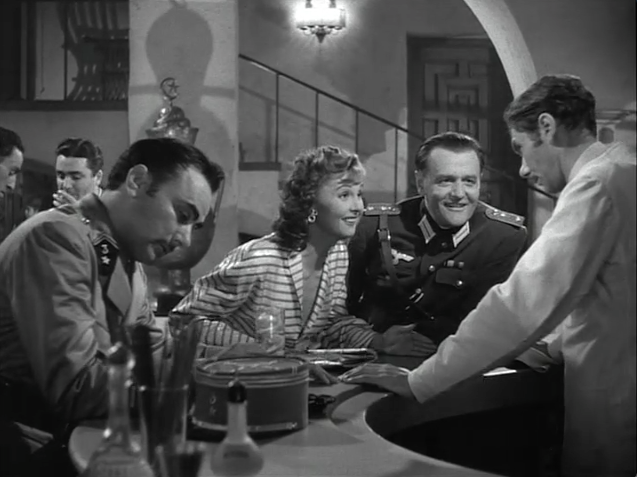
Yvonne (French woman who is romantically spurned by Rick) brings a German Officer to the Cafe & he orders a “French 75!”
The French 75 was popularized in America at the Stork Club in New York. It appears in one of the most famous movie “Casablanca” (1942) & is referenced twice in the John Wayne film “A Man Betrayed” (1941.) Today’s recipe is below:
1 lemon
4 tablespoons (2 ounces) gin
2 tablespoons (1 ounce) fresh lemon juice
1 tablespoon (1/2 ounce) simple syrup
1 cup ice cubes
1/4 cup (2 ounces) brut Champagne, chilled
In cocktail shaker, combine gin, lemon juice, and simple syrup. Add ice and shake vigorously for 20 seconds. Strain into chilled Champagne flute and top with sparkling wine.
https://euvs-vintage-cocktail-books.cld.bz/1923-Harry-of-Ciro-s-ABC-of-mixing-cocktails-second-impression/64
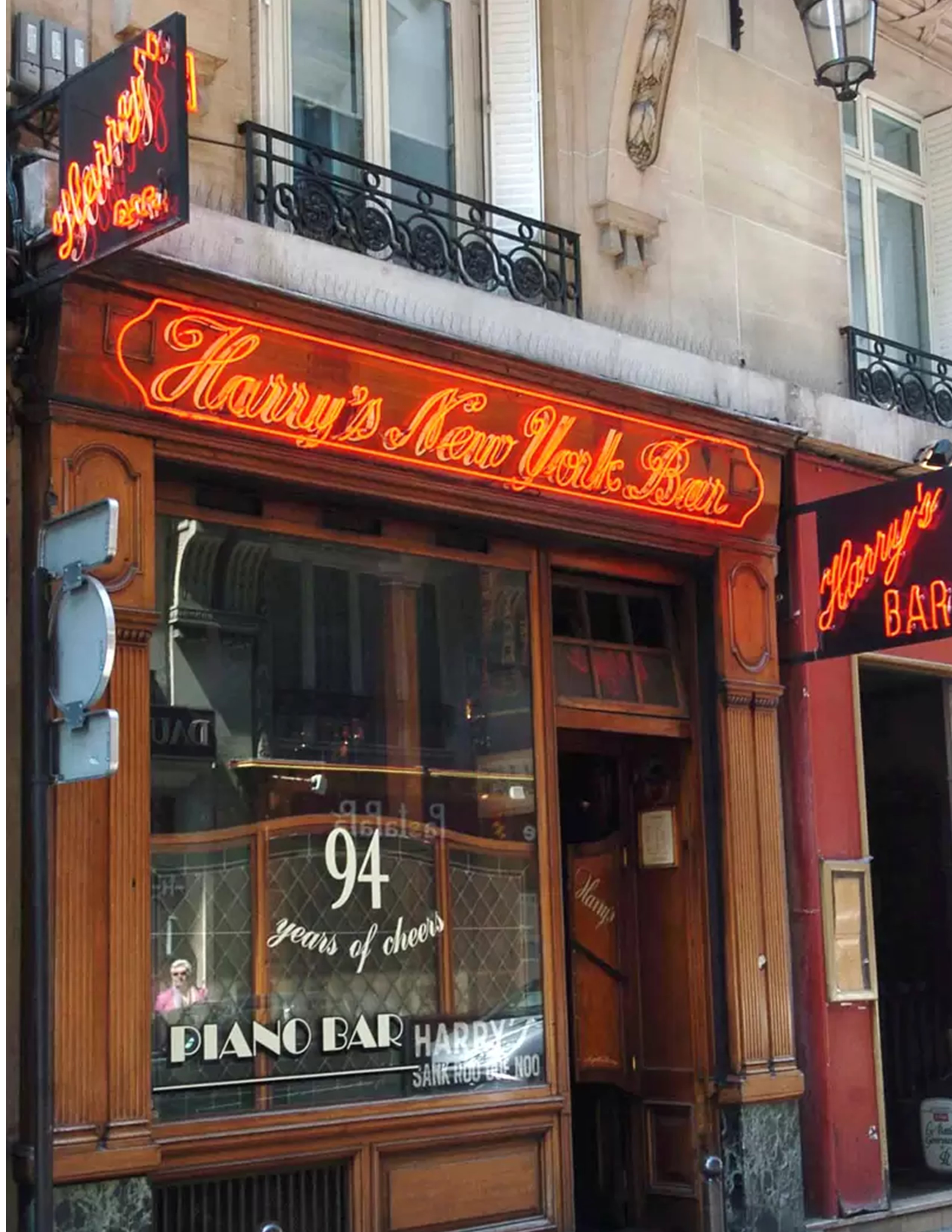
I first found out about Harry’s New York Bar during a Mediterranean Cruise deployment 26th Marine Expeditionary Unit (Special Operations Capable) (MEU(SOC)) Landing Force 6th Fleet 1-88 with Battalion Landing Team 1st Battalion 8th Marines. The wives flew into Nice, France while the MEU’s ships were in port along the Côte d’Azur (French Riviera) & mine came over to Marseille where the “Proud (Food) Lion” The USS Ponce (LPD-15) was in port. We took the train to Paris over a long weekend & stayed just a half block off the Avenue de l’Opera & a quarter mile from the Louvre. We asked the concierge for someplace off the Ave de l’Opera which had loads of touristy sidewalk pastry shops. He gave us the “Sank Roo Doe Noo" (5 Rue Daunou, which we found was a slogan of Harry's New York Bar) address & showed us a map of the easy walk up the big Avenue. The entire place was broken down & moved from New York to Paris & is a classic deep mahogany wood bar with the walls loaded with historic photos, posters & surprisingly lots of U.S. College pennants.
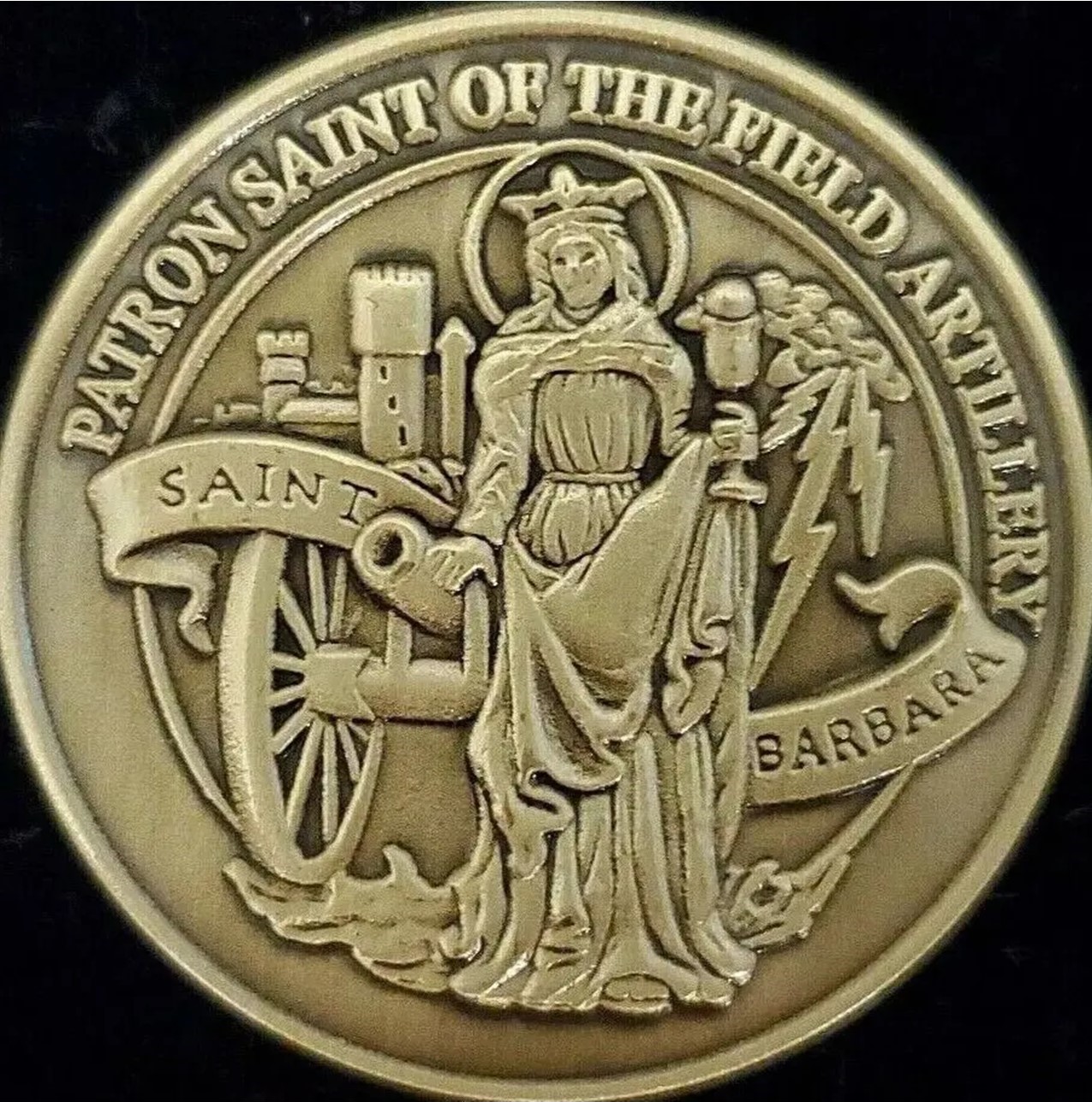
It was perfect for people watching as there were a host of regulars & a few American tourists. The cocktail menu was overwhelming but of course as artilleryman the “French 75” stuck out as a must try. In the years that I was not in an Artillery Regiment when 4 December rolled around, we would have to honor the Patron Saint of the Field Artillery, St. Barbara. Barbara was martyred for her Christian Faith. When God used lightening in a “fire for effect” on her murderous pagan father she came to be regarded as the sainted patroness of those in danger from thunderstorms, fire, explosions that is to say, sudden death. Given the questionable reliability of early powder, cannon misfires, muzzle bursts, defective munitions & exploding weapons were not uncommon, it is easy to see why The King of Battle sought the protection of Saint Barbara. I mixed “French 75s” for the toast to St. Barbara.
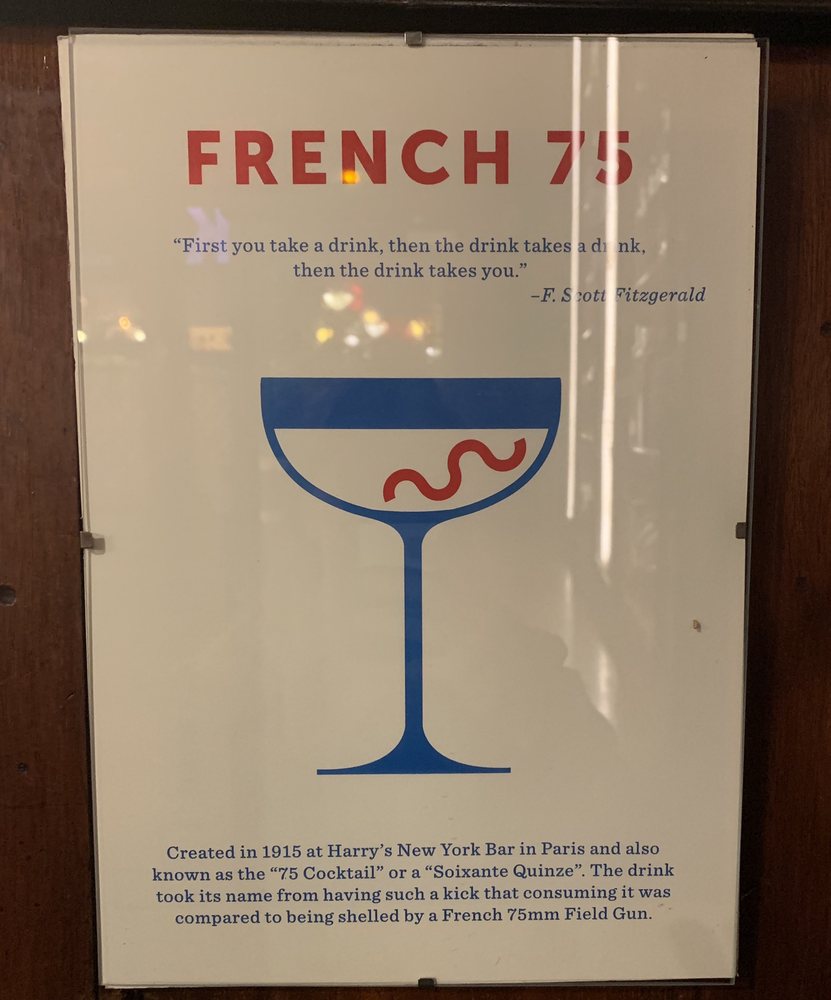
Harry's New York Bar history list the large number of famous American expatriates & international celebrities such as Coach Knute Rockne, Sinclair Lewis, F. Scott Fitzgerald, Ernest Hemingway, Bill Tilden, Coco Chanel, Jack Dempsey, Aly Khan, Rita Hayworth, Humphrey Bogart, & even the Duke of Windsor.
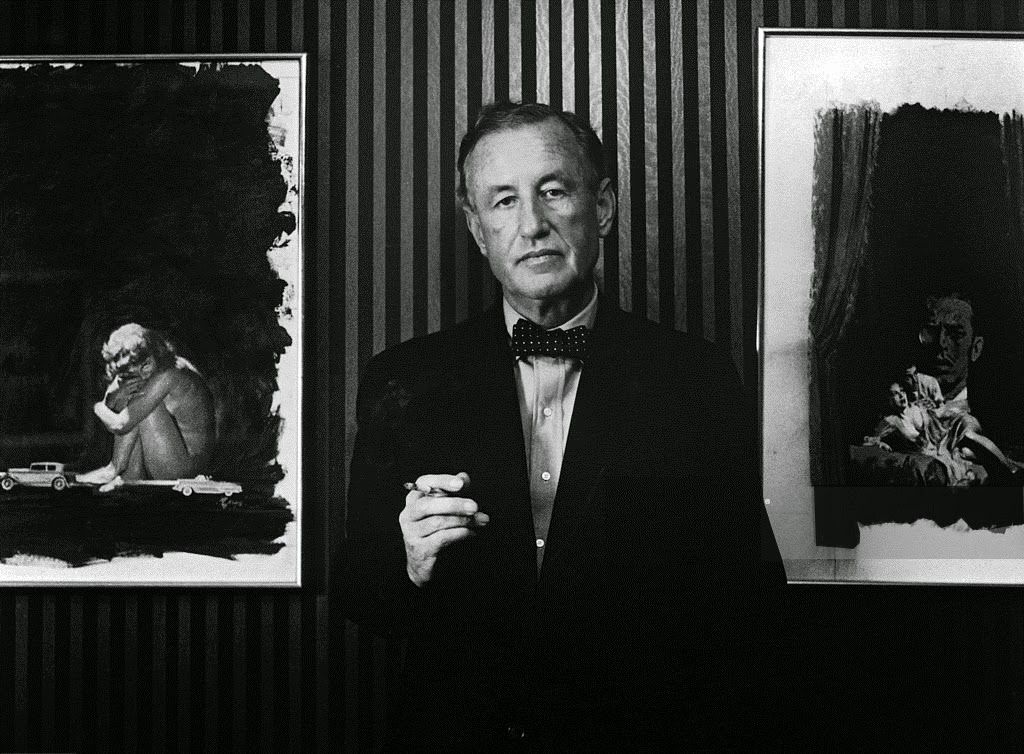
One of the most interesting stories is author Ian Fleming being a frequent customer in the late 1950’s. He included the bar in his 1960 short story "From a View to a Kill", he recounts his famous character James Bond visiting Harry's Bar during his first visit to Paris at age 16. Young Bond, James Bond followed the instructions in Harry's advertisement in the Continental Daily Mail, giving his taxi driver the address "Sank Roo Doe Noo." Bond recalls, "That had started one of the memorable evenings of his life, culminating in the loss, almost simultaneous, of his virginity and his notecase." In 1962, Fleming was honored by Harry’s with a “James Bond” Cocktail created with a sugar cube, a few dashes of Angostura aromatic bitters, an ounce of Vodka topping off the glass with champagne & a twist of lemon or orange. The cocktail was to honor Fleming as his first Bond film “Dr. No” was coming to theaters. See it made:
https://www.harrysbar.com/?grid_634d250-category=classics#news
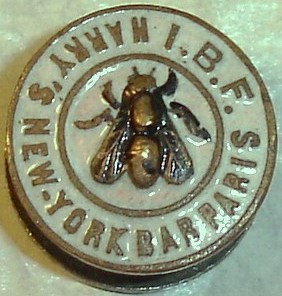
The regulars at the New York Bar started the International Bar Flies with Harry’s establishment getting the honor of the first trap with other bar fly traps from Shanghai to Bombay to Rio de Janeiro. Like any association there were elected leaders Big Blue Bottlefly, Secretary Housefly, Spanishflies & Gadflies. Rules were created my favorite #11) Remember, nothing is on the house but the roof!
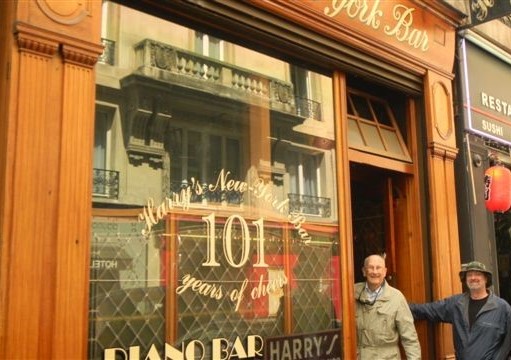
Col Bill White USMC(Ret) & son James White
Whenever in Paris, MHT’s lead tour leaders & barflies always dropped in. Our two legendary WWI Tour Leaders Colonels Bill White (USMC(Ret)) (Historian, tour leader, editor of Leatherneck) & his running mate Vern Sylvestre (USMC(Ret)) always brought the group in for the ambiance & a quality cocktail in Paris to celebrate another great tour of the WWI battlefields.

Vern had a beautiful hardwood Eagle, Globe & Anchor plaque made & the two presented it to Harry's. There is an engraved plate on the back saying it was presented by the two Marine Colonels to Harry's in honor of the 4th Marine Brigade & “Vive la France!” The Brigade blunted the German’s final Marne Offensive at Chateau-Theirry on 30 May 1918 & would gain undying fame at Belleau Wood where the legendary Marine Gunnery Sergeant Dan Daly reputedly leaped from a trench bellowing to his platoon: “Come on, you sons of bitches! Do you want to live forever?”
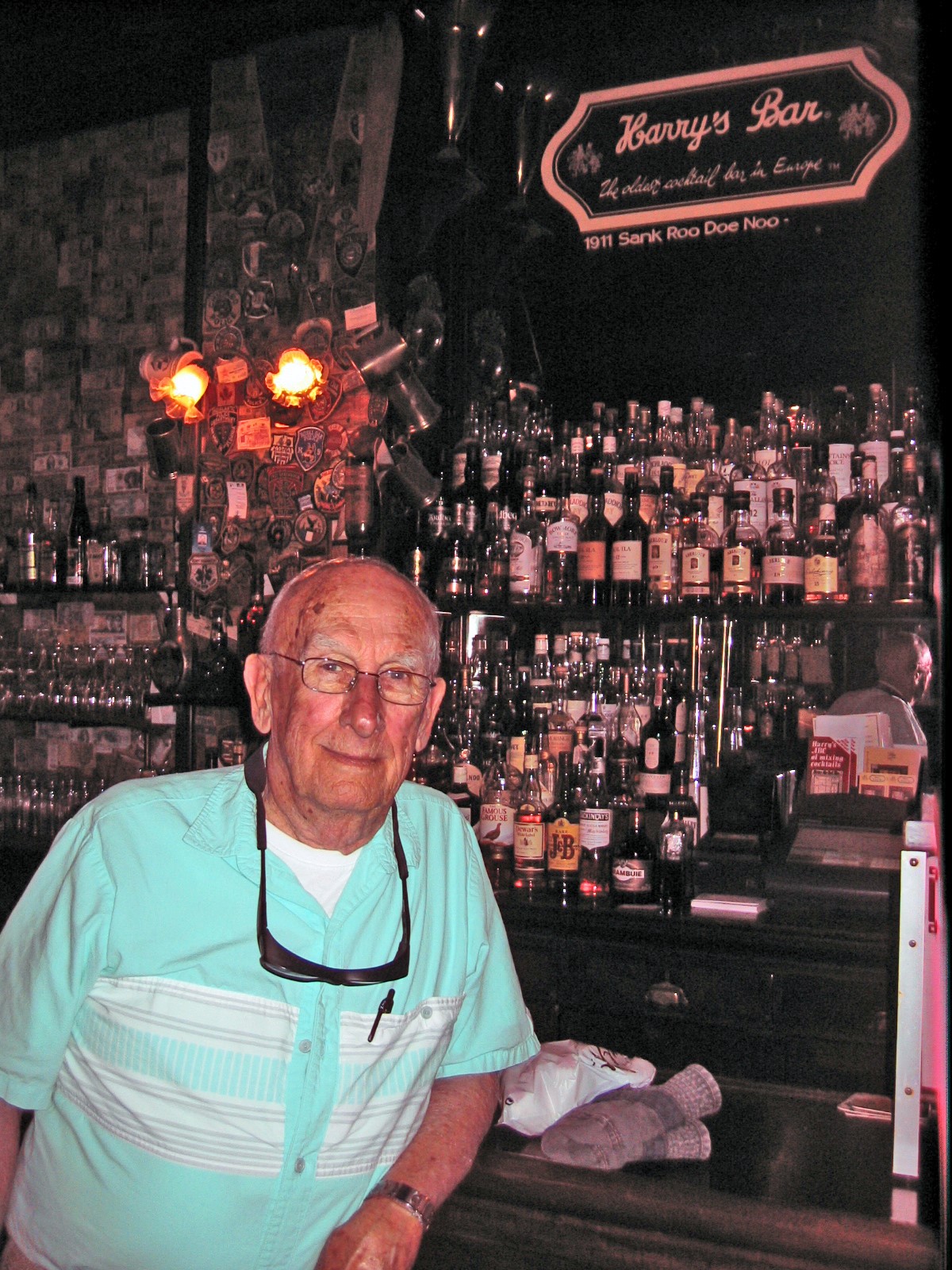
A photo of Bill & Vern was presented by renowned MHT Tour Leader "The Big G' LTC Gary Andrejak (USAF(Ret). He broke it out while he, Bill & James White (Bill’s son who succeeded his father as the WWI Tour Leader) were at Harry's on a later tour & talked the duty bartender into putting up the “Semper Fi” shot in a place of honor next to the plaque. So, Bill & Vern’s picture thus joined Ernest Hemmingway, Harry McElhone, & a very small handful of others on the walls of Harry's. MHT probably never had a more knowledgeable trio of WWI historians as Bill, Vern & Gary.
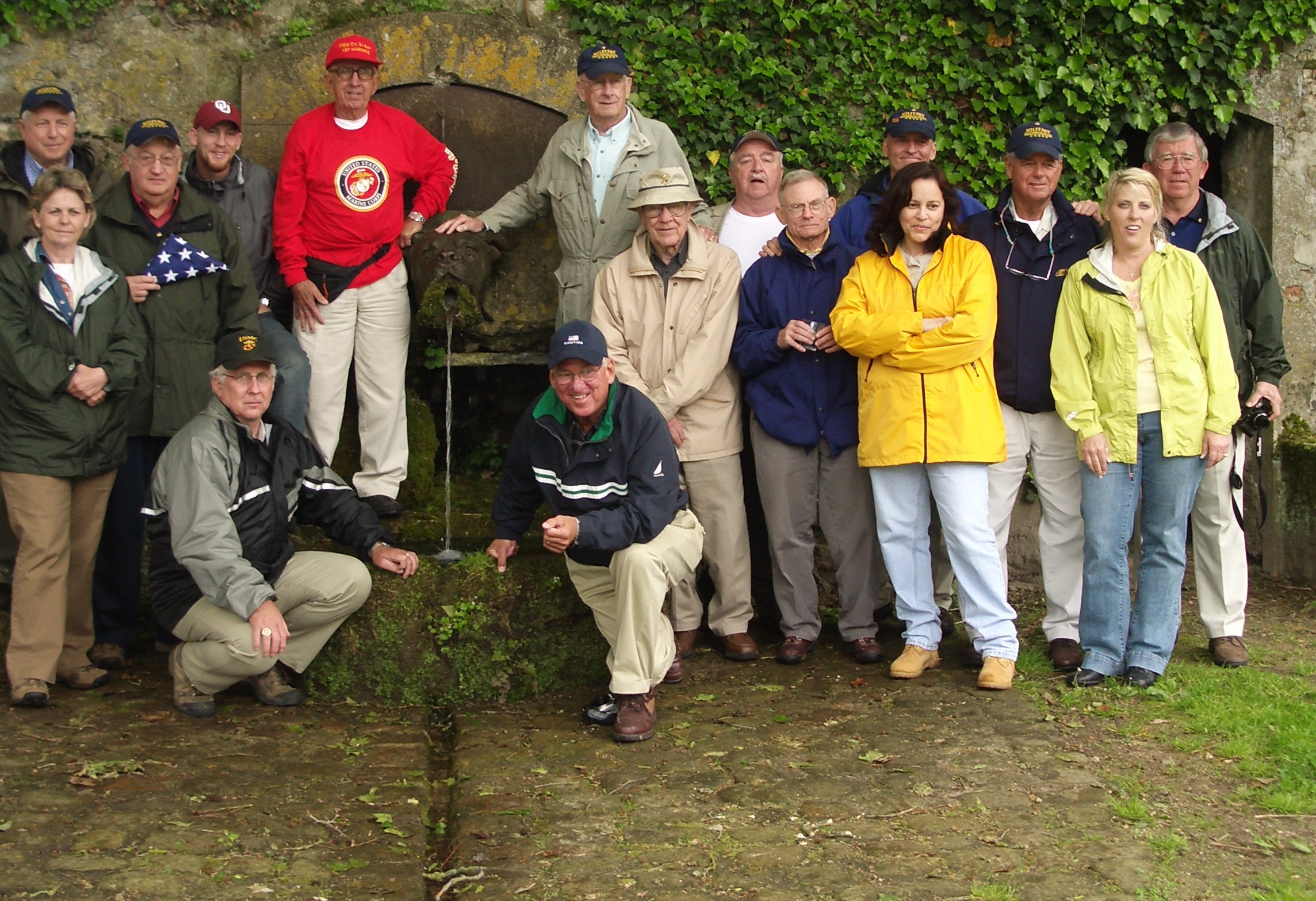
Gary holding flag, Bill in the MHT Ballcap with his hand on the legendary Belleau Wood Bulldog Fountain & Vern in front of Bill in the tan bucket hat with WWI group.

